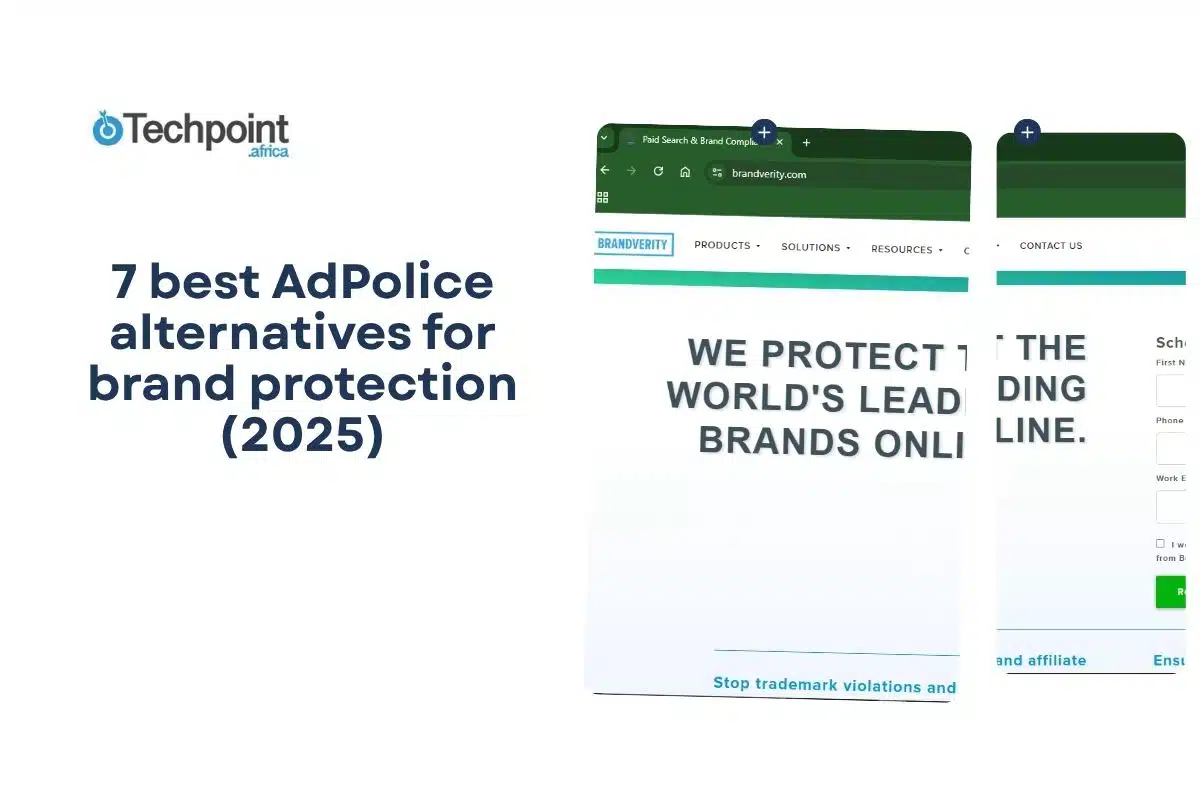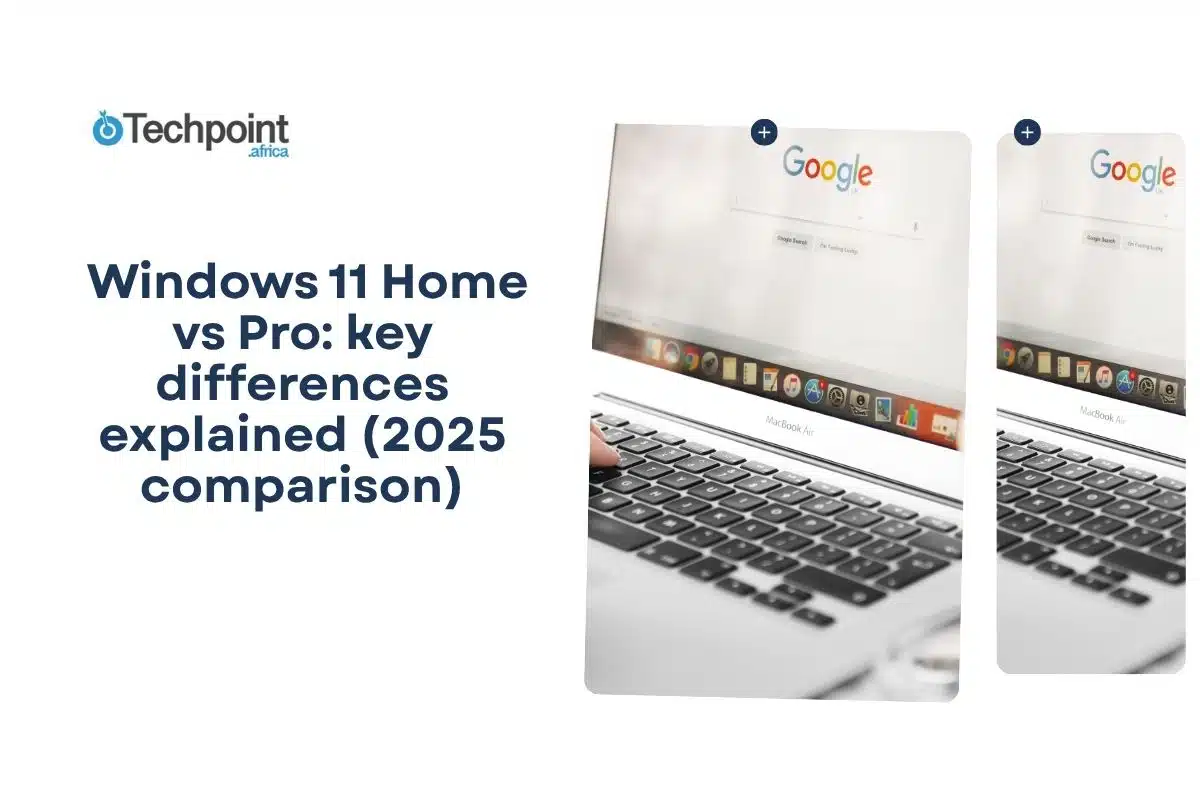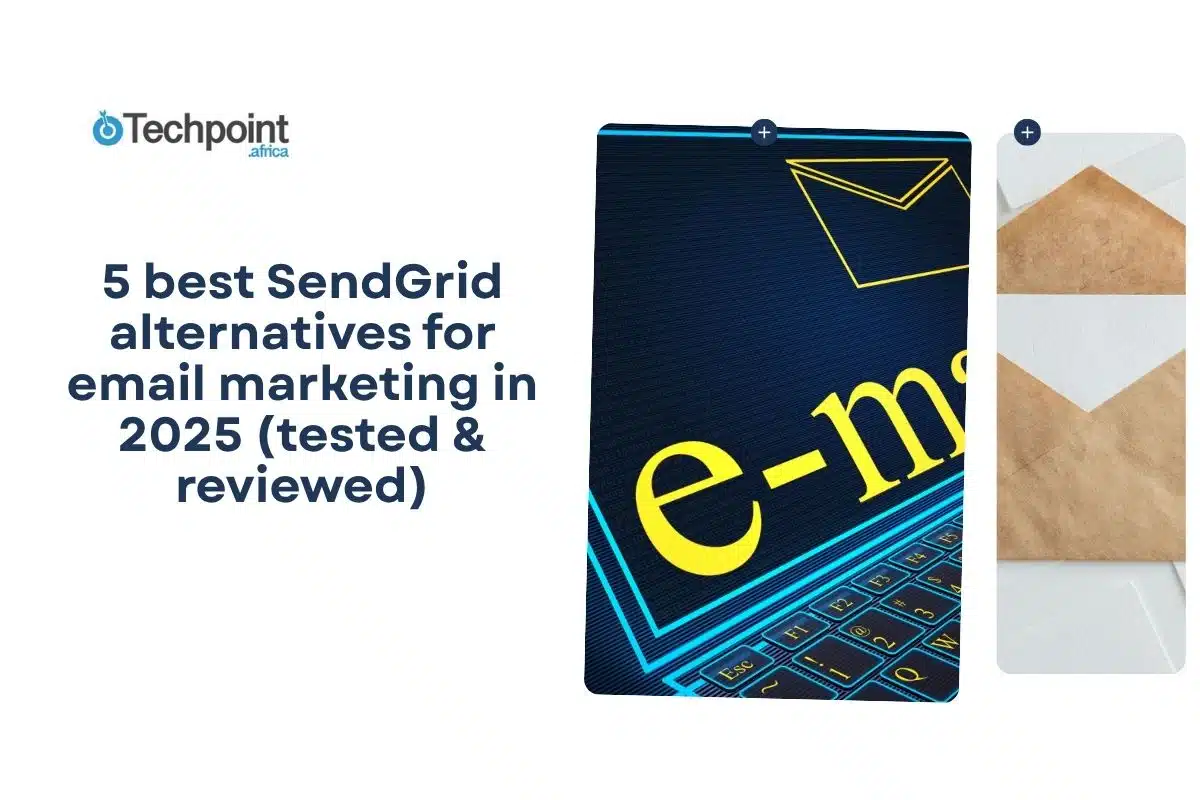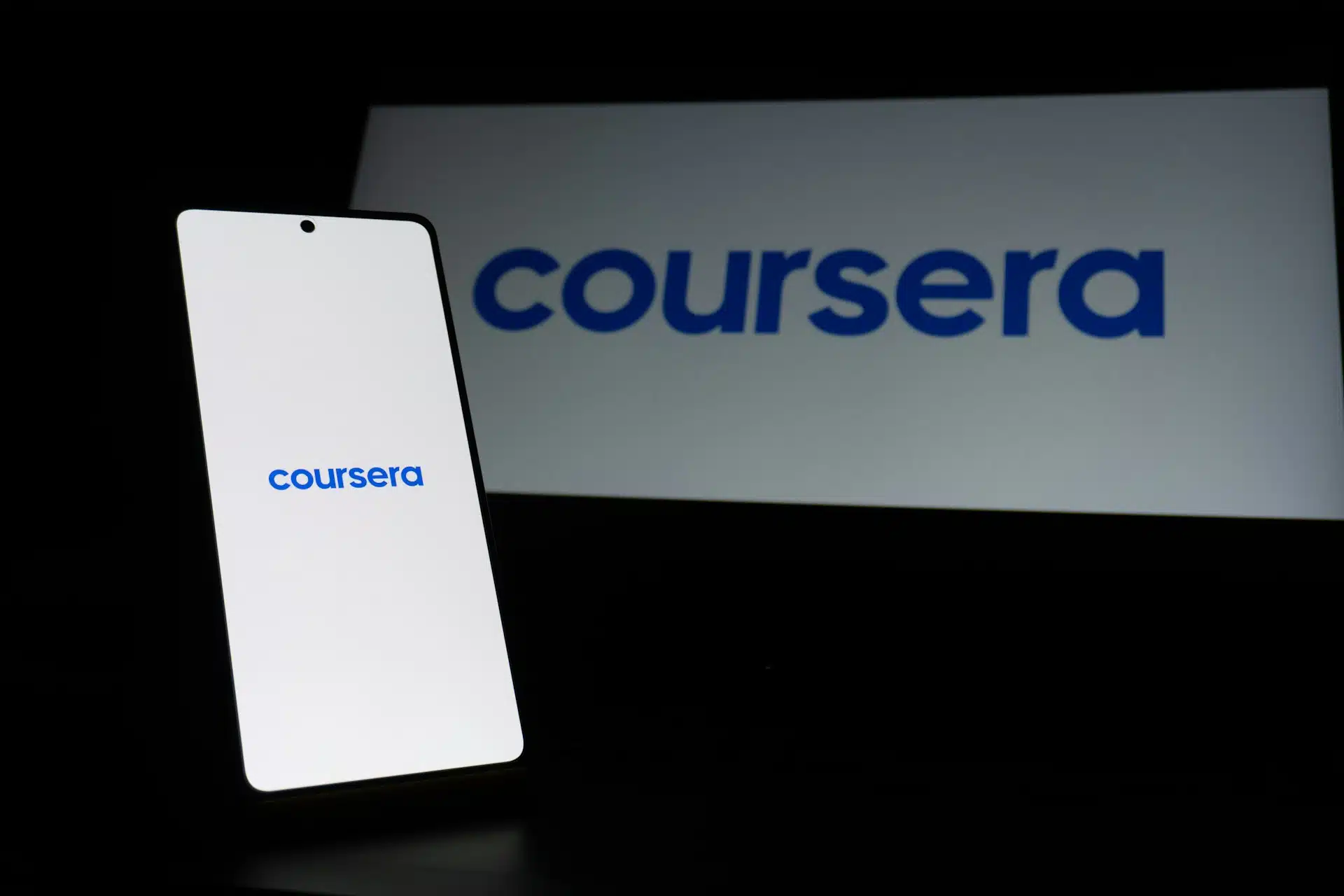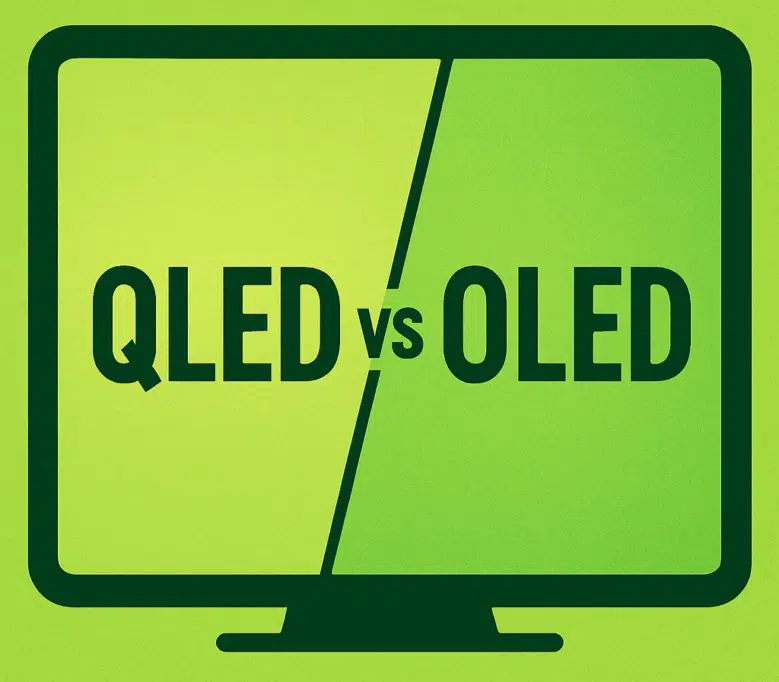
The debate between QLED and OLED is one of the most talked-about distinctions in television. These two technologies dominate the high-end market, yet they operate on fundamentally different principles, and the impact is visible the moment a screen lights up.
Understanding these technologies isn’t just about knowing how they work. It’s more about recognizing how they shape real-world viewing. From how colors appear in daylight to how motion looks in fast-paced scenes, the difference can be subtle or striking depending on the environment.
This article breaks down what sets QLED and OLED apart in practical terms. It looks at how each performs across categories like brightness, contrast, durability, etc, so you can best decide which display technology best suits your preferences, habits, and living spaces.
Let’s see what more below!
But what exactly is QLED, and is there more to it?
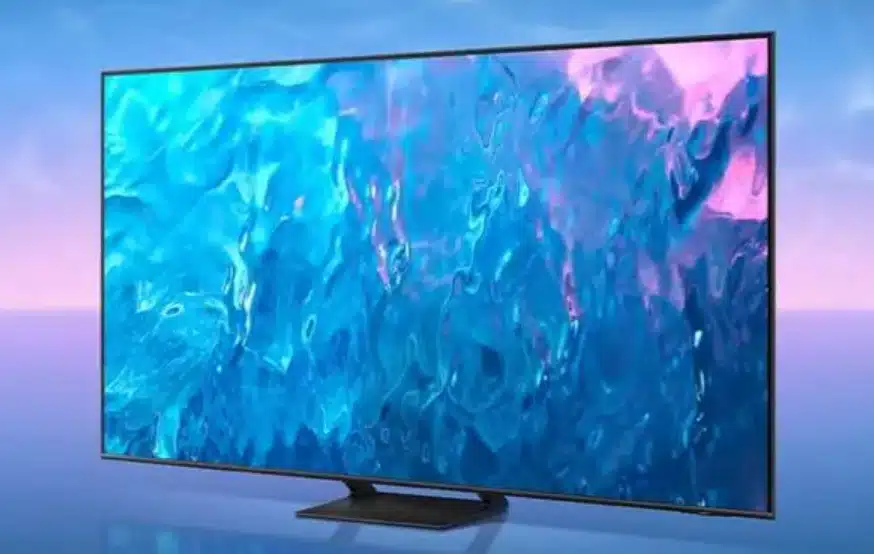
The name ‘QLED,’ introduced by Samsung, refers to its Quantum Dot Light Emitting Diode display technology.”While it’s a type of television that enhances traditional LCD technology with a quantum dot color filter, it’s essential to know that QLED is not a new kind of panel but actually a betterment of LED-backlit LCD TVs designed to deliver brighter images and richer color, particularly in HDR content.
But true talk? QLED is backlight-dependent. Every pixel you see is still lit from behind, usually by a full-array or Mini-LED system. The “quantum dots” are nanometer-sized particles that glow when hit by light. This extra layer elevates the purity of the red and green colors produced, resulting in more vivid and lifelike visuals.
To break it down, a QLED TV usually contains:
- A full-array LED or Mini-LED backlight, which produces white or blue light.
- A Quantum Dot Enhancement Film that modifies the light spectrum to deliver better color accuracy and brightness. These microscopic nanocrystals react when hit by the LED light, converting it into highly saturated red and green light. This mixes with the native blue backlight to create a more vivid RGB signal.
- An LCD Panel that modulates the light through millions of pixels to form the actual image.
- Color Filters and Polarizing Layers that refine and shape the final picture.
This layered design is how light passes through in QLED before it reaches your eyes. But QLED doesn’t control light at the pixel level. Instead, it uses local dimming zones to approximate deep contrast. On high-end models, these zones can be in the thousands (Mini-LED QLEDs like Samsung’s Neo QLED line). They’re fewer and less precise on cheaper ones, which leads to haloing and weaker black levels.
What QLED does well
Because of its structure, QLED offers several significant advantages, such as:
- Superior Brightness. Premium models reach over 2,000 nits, ideal for bright rooms.
- Vivid Color Volume. Quantum dots deliver rich HDR tones and a wider color gamut.
- No Risk of Burn-In. Suitable for static UI content, gaming dashboards, and news tickers.
- Affordable at Larger Sizes. Costs significantly less than OLED at 75″ and beyond.
- Long-Term Durability. Less prone to image retention or organic pixel degradation.
QLED’s technical limitations
Despite its strengths, QLED TVs come with these trade-offs:
- Inferior Black Levels. Because pixels cannot turn off individually, QLED struggles to deliver true black in dark scenes.
- Blooming and Light Bleed. Bright objects on dark backgrounds may produce halos, even on high-end models.
- Weaker Viewing Angles. Most QLED panels use VA-type LCDs, which lose color and contrast when viewed from the side.
- Thicker Panels. The need for backlighting and multiple layers makes QLED TVs bulkier than OLEDs.
- Limited Contrast Precision. Contrast performance depends heavily on algorithm quality and backlight granularity, even with full-array local dimming.
Brands offering QLED TVs in 2025
While Samsung has used the QLED for its TV branding since 2017, many brands now sell quantum dot-enhanced TVs, even if they don’t label them the same way. Here’s who’s active in 2025:
- Samsung – Neo QLED 4K/8K, Q60C to QN95D lines.
- TCL – QM8, Q7, Q6 (Mini-LED QLEDs with high brightness).
- Hisense – U8K, U7K, U6K series (QLED + Mini-LED combo).
- Vizio – P-Series Quantum, M-Series Quantum.
- Sharp and Philips – Selected quantum dot-enhanced models.
QLED screen sizes available in 2025
QLED TVs come in one of the widest ranges of sizes that any modern display technology is known for:
- Compact Sizes – 32″, 43″, 50″.
- Mainstream Sizes – 55″, 65″, 75″.
- Extra-Large Formats – 82″, 85″, 98″, 100″, and 115″ on select models.
This breadth makes QLED an attractive option for users who want large-format TVs without paying the OLED premium. Speaking of OLED, let’s hear all about it next.
OLED TVs, what they do well, where they fall short, who makes them, and in what sizes
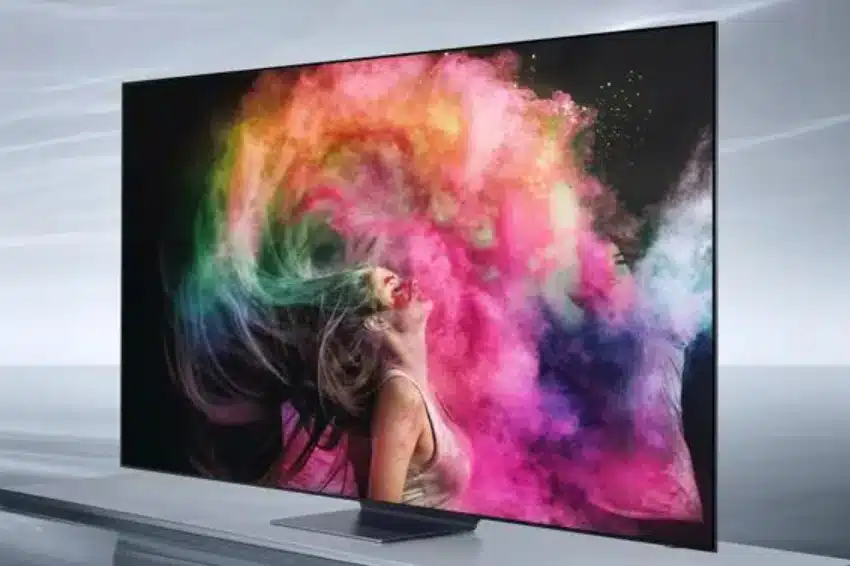
OLED (Organic Light Emitting Diode) is a high-end display technology built on the principle of self-emission. OLED panels produce light directly from their individual subpixels, which are made from organic electroluminescent materials. When current passes through these compounds, they glow, simultaneously creating light and color. Each pixel operates independently, meaning it can be turned on, dimmed, or completely shut off without affecting surrounding pixels.
This allows OLED screens to control light at the pixel level, resulting in perfect black levels and a superior contrast ratio.
Because of its self-emissive technology, OLED doesn’t need the additional layers found in QLED or traditional LED-LCD TVs (like polarizers, backlights, or light diffusion sheets). This simplifies the panel structure and improves performance characteristics such as uniformity, motion clarity, and viewing angles. However, this structure also introduces a few inherent challenges, which we’ll explore below after exploring the good bits.
What OLED does well
Regarding display performance, OLED technology stands out in several key areas that directly impact image quality, design flexibility, and user experience. Here’s what OLED does exceptionally well:
- Infinite Contrast Ratio. OLED panels can switch off individual pixels completely, producing true blacks with zero backlight bleed or haloing effects.
- Wide Viewing Angles. Colors and contrast remain remarkably consistent, even when viewed from the side or extreme angles.
- Superior Screen Uniformity. OLED displays eliminate common LCD issues like dirty screen effect or visible clouding, especially in dark scenes.
- Fast Pixel Response. The self-emissive nature allows for near-instant pixel changes, making OLED ideal for fast-paced gaming, action movies, and live sports.
- Ultra-Thin Panel Design. Without the need for a backlight layer, OLED screens can be incredibly slim (some measuring just millimeters in depth), making them perfect for flush wall mounting or sleek installations.
OLED’s technical fallbacks
Despite its strengths, OLED is not perfect. It has:
- Lower Peak Brightness. Even the latest OLED panels (MLA and QD-OLED) max out around 1,300–1,500 nits, which may be less suitable for very bright rooms.
- Burn-In Risk. Static content (logos, news tickers) left for long periods can cause permanent image retention over time, although this is rare in everyday use.
- More Expensive at Larger Sizes. OLED panels cost significantly more than similarly sized QLED TVs, especially above 77 inches.
- Lifespan Concerns. Blue OLED subpixels degrade faster than red or green, potentially affecting long-term color balance in some models.
Brands offering OLED TVs in 2025
As of this year, OLED TV panels are produced by two loyal companies—LG Display and Samsung Display—but many premium brands use them in their flagship models:
- LG Electronics – C4, G4, B4, M4 (MLA OLEDs and wireless models).
- Sony – A80L, A95L (mix of WRGB OLED and QD-OLED panels).
- Samsung – S90C, S95C, S95D (exclusively QD-OLED panels).
- Panasonic – LZ2000, MZ1500 (Europe and Asia only).
- Philips, Loewe, Grundig – Premium OLEDs sold mainly in Europe.
LG uses WRGB OLED, while Samsung and Sony use QD-OLED—a newer variation that combines self-emissive OLED with a quantum dot filter for improved color brightness and accuracy.
OLED screen sizes you can find in 2025
OLED TVs have become more versatile in size, now offering:
- Compact Sizes – 42″, 48″
- Mainstream Sizes – 55″, 65″, 77″
- Premium Large Sizes – 83″, 88″, 97″
- Experimental & Custom – Some LG wireless OLED models go beyond 100″, targeting high-end home theaters
OLED continues to expand in size and panel design, but due to cost and manufacturing complexity, QLED still leads in overall size diversity.
QLED vs OLED technical comparison
When it comes to display technology, the facts are in the details. This section explains the technical forms of QLED and OLED in every measurable performance metric, be it brightness levels, contrast ratios, motion clarity, or long-term durability.
Brightness and HDR Performance
QLED wins in peak brightness. Due to its powerful LED backlight and ability to amplify light through quantum dots, QLED TVs regularly exceed 1,500–2,000 nits. Premium models like Samsung’s Neo QLEDs can even hit 3,000 nits in dynamic HDR scenes. This makes QLED a top performer for daylight viewing, where strong ambient light would normally wash out darker displays.
OLED falls short in this category, but not as much as people think. Today’s OLED panels peak between 800 and 1,200 nits, depending on panel type and brand. However, newer advancements like Micro Lens Array (MLA) in LG’s G4 or Samsung’s QD-OLEDs are pushing up to 1,400–1,600 nits in highlights, closing the gap considerably.
That said, OLED doesn’t need to be as bright because it can show absolute black. The absence of light next to bright pixels increases perceived contrast, so real-world HDR scenes often look more three-dimensional on OLED even when measured brightness is lower.
Contrast Ratio and Black Levels
This is OLED’s most substantial advantage.
Because OLED can turn individual pixels off entirely, it delivers true blacks with infinite contrast ratios. You can watch a star field on a black screen, and the black is absolute with no blooming, no gray glow, just darkness.
Even with thousands of local dimming zones, QLED cannot completely shut off pixels. There will always be some light bleed or haloing, especially in high-contrast scenes.
Though QLED contrast has improved with full-array local dimming and Mini-LED backlights, which allow finer light control, it’s still zone-based. OLED is pixel-based. And this gap is one QLED hasn’t fully closed yet.
Color Accuracy and Volume
Both technologies can deliver wide color gamuts, covering over 95% of DCI-P3 in premium models. But their methods differ.
QLED achieves wide color through quantum dots, which convert blue LED light into vivid red and green. This results in excellent color volume, another way to say colors stay rich even at high brightness.
OLED uses white OLED subpixels with color filters (in WRGB panels), or pure RGB pixels in QD-OLEDs (like those in the Samsung S95D), pushing this further, combining OLED contrast with quantum dot color enhancement. OLED is naturally great at producing nuanced, deep tones, especially in dark, shadowy scenes. In HDR content, QLED might look more “punchy,” while OLED feels more cinematic and balanced. If you’re calibrating your TV or watching reference-grade content, OLED often delivers a more accurate image without oversaturation.
So, the choice here comes down to preference.
Viewing Angles
OLED is the undisputed champion on this one.
Its self-emissive design allows for nearly 180-degree viewing angles without significant color, contrast, or brightness loss. Even if you sit far off-center, the image still looks vibrant.
QLED falls behind here, especially in VA-type LCD panels. At sharp angles, colors fade and blacks become washed out. Some high-end QLEDs, like Samsung and Sony, include wide-angle filters but never fully match OLED’s off-axis performance.
Motion Clarity and Gaming Response
OLED excels with pixel-level response times often below 1ms. That means virtually no blur in fast motion, which is ideal for sports, action movies, and gaming.
QLED response times depend on the LCD panel type (VA, IPS, etc.). VA panels respond more slowly, causing motion trails or smearing in fast-paced scenes. IPS QLEDs are better, but not common. While high-end QLEDs with 120Hz refresh, VRR, and motion interpolation can improve things, OLED is fundamentally quicker and cleaner.
Both QLED and OLED now support:
- 120Hz native refresh rates
- HDMI 2.1
- VRR (Variable Refresh Rate)
- ALLM (Auto Low Latency Mode)
Still, if you want the lowest latency and smoothest native motion, choose OLED.
Burn-In and Image Retention
This is OLED’s Achilles’ heel. Because the organic materials degrade with use, static elements (HUDs, logos, scoreboards) can “burn in” over time, leaving faint ghost images. This isn’t a dealbreaker for most users, but it’s a genuine concern for heavy gamers or news watchers.
Modern OLEDs now include:
- Pixel shift and compensation cycles
- Logo luminance reduction
- Screen savers after idle time
These work, but they’re still band-aids for an underlying risk.
QLED has zero burn-in risk. LCD panels don’t suffer from organic decay, so you can leave content on-screen for hours or days without concern. For 24/7 usage or static content (security displays, news walls), QLED is the safer bet.
Power Consumption
OLED generally consumes less power when showing darker scenes because pixels are off. In an all-black scene, energy usage drops dramatically. But in bright scenes, OLED’s power spikes, sometimes matching or exceeding QLED.
QLED has a more consistent energy draw, especially with full-array backlights and peak brightness modes. Mini-LEDs help improve efficiency, but OLED still wins in dark-room environments where black is dominant.
Panel Lifespan and Durability
Modern OLED panels can last 30,000 to 50,000 hours, with typical usage of around 6 to 10 years of daily watching. But burn-in and color drift can reduce that lifespan.
QLED panels don’t suffer from organic decay and often outlast OLEDs, particularly when exposed to constant brightness. They’re also less susceptible to moisture and physical damage during handling.
| Feature | Winner | Why |
| Peak Brightness | QLED | Better for HDR highlights and daytime use. |
| Black Levels & Contrast | OLED | True blacks, infinite contrast, no blooming. |
| Color Volume | QLED | Maintains color at high brightness. |
| Color Accuracy | OLED/QD-OLED | Deeper tones and better out-of-the-box precision. |
| Viewing Angles | OLED | Minimal shift in color or contrast off-axis. |
| Motion Handling | OLED | Instant response time, blur-free motion. |
| Burn-In Resistance | QLED | No risk from static content. |
| Power Efficiency (Dark Use) | OLED | Uses less power for dim or black-heavy content. |
| Panel Durability | QLED | Better resistance to degradation and external elements. |
So,
OLED wins in black levels, contrast, response time, and viewing angles.
QLED leads in brightness, burn-in resistance, and long-term durability.
What living with QLED and OLED actually feels like
It’s one thing to compare specs and benchmarks. But in the end, most people don’t watch test patterns; they watch movies, sports, YouTube, and games. So let’s talk about what it feels like to live with these TVs daily. This section breaks down the real-world experience of using QLED and OLED, from living room lighting conditions to gaming sessions and design aesthetics.
Daylight Viewing vs. Dark Room Performance
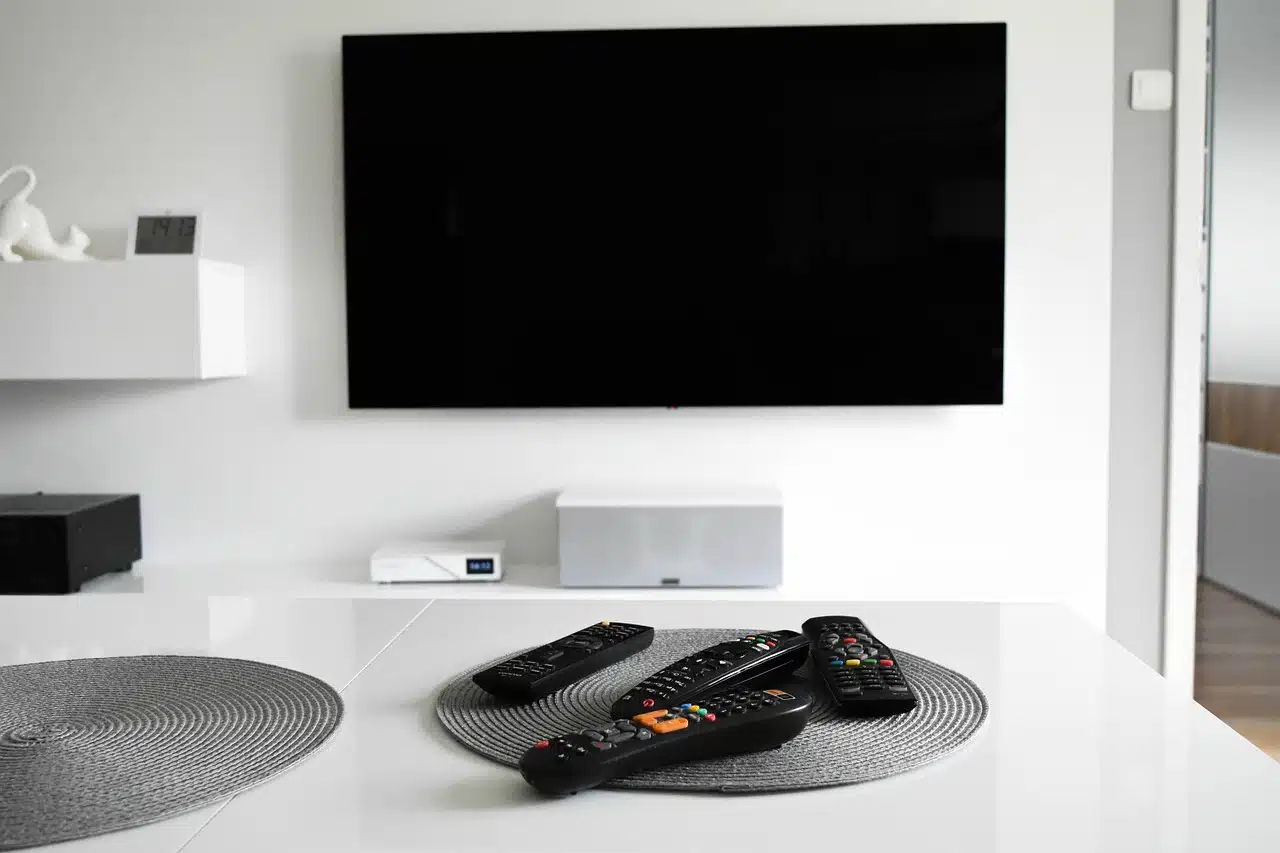
QLED IS FOR bright rooms. Its powerful backlight and high peak brightness make it immune to sunlight glare. If you’re watching TV during the day, or in a space with large windows and no blackout curtains, a QLED handles the ambient light without losing vibrancy.
On the other hand, OLED can look dim compared to such environments. Even with newer OLEDs hitting higher brightness levels, their strength really shows in dim or dark settings. That’s where their contrast and pixel-level black control deliver a truly cinematic experience. You’d get deep blacks, no blooming, and a sense of depth that QLED struggles to replicate.
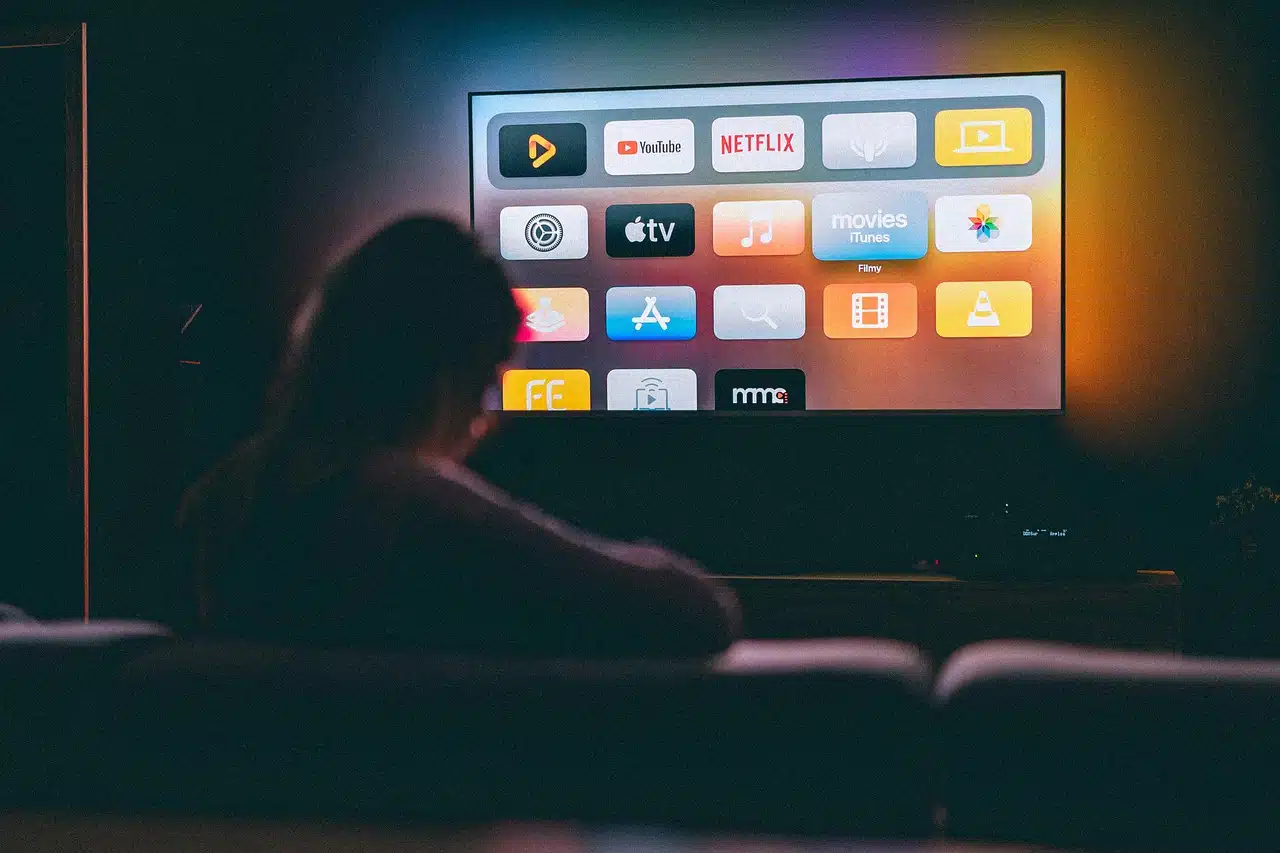
So if you’re watching a thriller at night, OLED creates that inky, immersive mood. But if you’re binging sitcoms at noon in a sunlit living room, QLED will look more lively.
Gaming Experience: Responsiveness, Clarity, and Burn-in Worries
If you’re a gamer, both technologies have upped their game literally.
Modern OLEDs and high-end QLEDs now include HDMI 2.1, 4K 120Hz, VRR, ALLM, and ultra-low input lag. However, OLED still has the edge in response time and motion clarity. The nearly instant pixel transitions mean that racing games, first-person shooters, and open-world exploration all feel smoother and more fluid. No motion blur. No ghosting. Just crisp, clean gameplay.
That said, burn-in anxiety is really tough for OLED owners. If you play games with persistent HUDs (health bars, ammo counters, maps), those static elements can leave a shadow over time, especially if you’re clocking daily hours on the same title. You’ll need to be a little more mindful about screen savers and rotation.
With QLED, you never have to think about it. You can leave a pause screen up for hours without any worry. And with newer QLEDs supporting similar gaming features, they’re a safer long-term bet for hardcore or casual gamers who play a variety of content.
Streaming, Apps, and Smart Features
Here’s where things get brand-dependent. Whether you buy a QLED or OLED, the smart experience depends on the TV maker, not the panel tech.
- Samsung QLEDs use Tizen OS, which is clean, fast, and filled with popular apps.
- LG OLEDs run on webOS, which is user-friendly but has annoyances like ad banners.
- Sony OLEDs and QLEDs use Google TV, arguably the most versatile with voice integration and app selection.
- Depending on the model, TCL and Hisense offer QLED and OLED with Google or Roku OS.
The bottom line is that this category has no “QLED vs OLED” winner; it’s all about the brand you choose.
Audio, Ports, and Ecosystem
Most modern TVs, whether OLED or QLED, sound underwhelming out of the box. Thin panels mean shallow speakers. That said, some OLEDs like the Sony A95L use the screen itself as a speaker (Acoustic Surface Audio), creating a more immersive soundstage without a soundbar.
As for ports, HDMI 2.1 is now standard across both technologies, though cheaper models may only include it on one or two inputs. Always check if you’re buying for gaming or 4K120Hz passthrough.
From a broader ecosystem standpoint, QLED TVs (especially Samsung) often integrate more tightly with SmartThings and Samsung mobile devices, while LG OLEDs play well with AirPlay, HomeKit, and Google Assistant. It’s worth considering if you have a smart home setup.
Price, Value, and Availability
This is where clear distinctions begin to fade.
QLED TVs have traditionally been more affordable, especially at larger sizes. You can find a 75″ QLED for less than a 65″ OLED. And there’s a broader range of budget QLEDs, mid-range, and flagship.
OLED TVs used to be luxury-only, but today we have more accessible models like LG’s B-series or even OLEDs from budget brands like Hisense and Skyworth. Prices are falling, and now a good 55” OLED isn’t much more expensive than a premium QLED.
Still, QLED is better for buyers who want bigger screen sizes at lower prices, while OLED is for those who value premium visual fidelity and are willing to spend a bit more (or downsize slightly).
Design, Aesthetics, and Wall Presence
OLED TVs are thinner, sleeker, and more elegant. Because they don’t need a backlight, their panels are incredibly slim, often just a few millimeters. Mounted on a wall, an OLED looks almost like a framed piece of art.
QLEDs, especially with Mini-LED backlights, are thicker and heavier, though some brands have gotten creative with near bezel-less frames and cable management systems.
So if you care about your TV doubling as a design piece, OLED has the upper hand. But QLEDs have improved here too, especially Samsung’s “The Frame” QLED series, which mimics wall art in standby mode.
Energy Use and Heat Management
OLED TVs can be more energy-efficient during dark scenes, but they draw more power during bright HDR scenes, especially as brightness levels push toward 1,000+ nits.
QLED TVs have more stable power consumption, but the larger backlights and quantum dot filters generate more heat, especially on full-array or Mini-LED systems.
In real life, both will affect your electric bill similarly unless you watch them for 10 hours a day at full brightness.
Conclusively,
QLED is perfect for bright rooms, always-on TV owners, and budget-conscious potential buyers who want large screen sizes.
OLED offers the best picture for movie lovers, gamers who prioritize visual quality, and anyone who watches in a darker space.
Best use cases of when to choose between QLED and OLED
By now, the technical and real-world differences between QLED and OLED should be apparent. But knowing which is better isn’t about crowning a universal winner, but recognizing which technology fits your taste, environment, and needs. Below are the most common scenarios where one option might clearly outperform the other.
| Choose QLED If… | Choose OLED If… |
| You watch a lot of TV in bright rooms. QLED thrives in well-lit spaces. Its high brightness and anti-reflective layers maintain clarity even under direct sunlight. | You watch movies or shows in a dark room. OLED’s perfect blacks and pixel-level contrast deliver unmatched cinematic depth in dim environments. |
| You leave content on for long hours. There is no risk of burn-in, making QLED ideal for news, games, or ambient use that stays on all day. | You care about picture quality above all else. OLED offers exceptional contrast, color accuracy, and uniformity, even for the most discerning eyes. |
| You want a larger screen for less. QLED models to scale to bigger sizes more affordably. A 75″ QLED often costs far less than a smaller OLED. | You’re a gamer who values responsiveness and immersion. OLED delivers ultra-low input lag and near-instant pixel response, enhancing every frame. |
| You’re focused on value and variety. Multiple brands and price points (from premium Samsung to budget TCL) make QLED highly accessible. | You want the sleekest design and minimal footprint. OLED panels are razor-thin and elegant, perfect for wall-mounting and minimalist setups. |
But are QLED and OLED all there is for TV innovation?
No. As great as QLED and OLED are today, the door hasn’t been closed to newcomers, and there are no favorites in the TV business. If you’re planning a future-proof purchase or just curious about what comes next, here’s where display innovation is heading.
QD-OLED
We mentioned QD-OLED earlier, but it deserves a closer look because it represents the first significant leap in OLED technology in over a decade.
Traditional OLED panels (like those from LG) use WRGB white OLED light filtered through RGB color layers. QD-OLED, developed by Samsung Display, uses blue OLED pixels paired with red and green quantum dots. This setup:
- Eliminates the need for color filters
- Enhances brightness (especially in the reds and greens)
- Preserves the pixel-level light control of OLED
The result? A brighter, more color-accurate panel, and just as slim as OLED, with better resistance to burn-in.
As of 2025, QD-OLED models like the Samsung S95D and Sony A95L are at the cutting edge. They’re expensive, but in direct comparisons, they consistently beat both traditional OLEDs and flagship QLEDs.
Mini-LED
Mini-LED is QLED’s answer to OLED’s contrast advantage. Mini-LED TVs achieve much more precise light control by shrinking the backlight into thousands of tiny LEDs (often with tens of thousands of local dimming zones).
Compared to older QLEDs, its
- Blooming is significantly reduced
- Black levels are deeper
- Brightness is even higher
TCL and Samsung are leading here. TVs like the TCL QM8 and Samsung QN90D deliver QLED’s strengths while borrowing some of OLED’s finesse in contrast.
In many ways, Mini-LED is QLED stepping up, but it’s still not quite pixel-level like OLED.
MicroLED
If there’s one display technology that might overthrow both OLED and QLED in performance and specifications, it’s MicroLED.
Here’s why it’s such a big deal:
- Like OLED, MicroLED is self-emissive, and each pixel produces its own light.
- Unlike OLED, it uses inorganic materials (microscopic LEDs), so there’s no burn-in and a longer lifespan.
- It combines the brightness of QLED with the black levels of OLED, and it can scale to enormous sizes.
Right now, MicroLED is ultra-expensive and limited to commercial or luxury applications. We’re talking prices in the tens of thousands, and screen sizes starting at 89 inches. However, over time (as manufacturing improves and costs drop), it has the potential to be the ultimate display technology for many.
What about Laser TVs and Projectors?
There’s also growing interest in ultra-short-throw laser projectors, sometimes marketed as “Laser TVs.” These use laser light sources and can project 100″+ images from just inches away. They’re compact, bright, and offer excellent color, but they don’t yet match the contrast or pixel precision of OLED or QLED.
Still, this is another technology to consider if you plan to install giant screens in tight spaces.
Conclusion: QLED vs OLED: which is best for you?
Looking closer, you’d see there is no best between these two for every situation. QLED and OLED serve distinct purposes, and choosing between them depends mainly on your viewing habits, room setup, and personal priorities.
OLED excels in controlled lighting environments where deep contrast, uniform blacks, and immersive visuals are key. It’s an excellent choice for dedicated movie watching, especially in dim or dark rooms.
QLED, on the other hand, often performs better in bright spaces, making it well-suited for daytime viewing, sports, and gaming in naturally lit rooms. Its generally higher peak brightness and broader range of screen sizes can also appeal to families or casual viewers seeking a versatile living room TV.
Ultimately, neither technology is universally “better.” Each comes with differences that matter more or less depending on how the TV is used. By understanding those differences, you can make a confident, informed choice that matches both your living settings and expectations.
QLED vs OLED Frequently Asked Questions (FAQs)
1. Should I avoid OLED if I watch news channels or play games with HUDs?
OLED burn-in is risky if your screen shows static logos, tickers, or game elements for hours daily. It’s rare with modern protections, but not impossible. You’re fine if your use is mixed (movies, games, apps). If you watch ESPN or play FIFA for 5+ hours a day, consider QLED instead.
2. Do QD-OLEDs solve OLED’s burn-in or brightness issues?
Partially, QD-OLED merges OLED’s contrast with quantum dot brightness and color volume. It’s brighter than traditional OLED and more burn-in resistant, but it’s still not immune. Think of it this way: OLED is the bolder, more robust second best, not its complete replacement.
3. Which is safer to leave overnight or all day between QLED and OLED?
QLED. You can safely display static images (like menus or signage) 24/7 without damage. If left idle for long periods, OLED should be powered down or set with screen savers or pixel shift.
4. Is it true that OLED TVs are fragile or prone to damage during installation?
Yes, especially large OLEDs, which use ultra-thin glass panels. They’re sleek and beautiful but bendable and delicate. Always handle it with two people. QLEDs are generally more rugged, especially in lower-end models.
5. Do I need to calibrate an OLED TV, or is it accurate out of the box?
Most OLEDs are remarkably accurate out of the box in modes like “Cinema” or “Filmmaker.” If you want perfection, ISF calibration improves results, but for most, it’s ready to go. QLEDs can have a more substantial visual impact and look, but often need tuning to avoid oversaturation.
6. Can OLED TVs be used in brightly lit rooms?
They can, but QLED handles bright light better. OLED performs best in controlled lighting. If you have floor-to-ceiling windows, pick QLED. If you watch at night or in dim rooms, OLED is wholesome.
7. Will OLED image quality degrade faster over time?
Potentially. Blue OLED subpixels age fastest, causing minor color shifts after years of use. But modern OLEDs manage this well. You might see a difference after 5–7 years, especially in units used for 8+ hours daily.
8. Does OLED emit less blue light and cause less eye strain?
Yes. OLED panels naturally emit less high-energy blue light than QLEDs and don’t rely on flickering backlights to adjust brightness. This makes them more comfortable for extended viewing, especially in dark rooms or late at night.
9. What happens to OLED or QLED if there’s a power surge?
Both are vulnerable, but OLED panels contain more delicate organic components and may be more sensitive to sudden voltage spikes. To prevent permanent damage, a surge protector or voltage-regulating UPS is highly recommended for either type.
10. Do OLED TVs need a break-in period like older plasma TVs?
No. Modern OLEDs don’t require a break-in phase. They come with built-in pixel refresh and screen protection features from day one, so you can use the TV normally without any special precautions.



